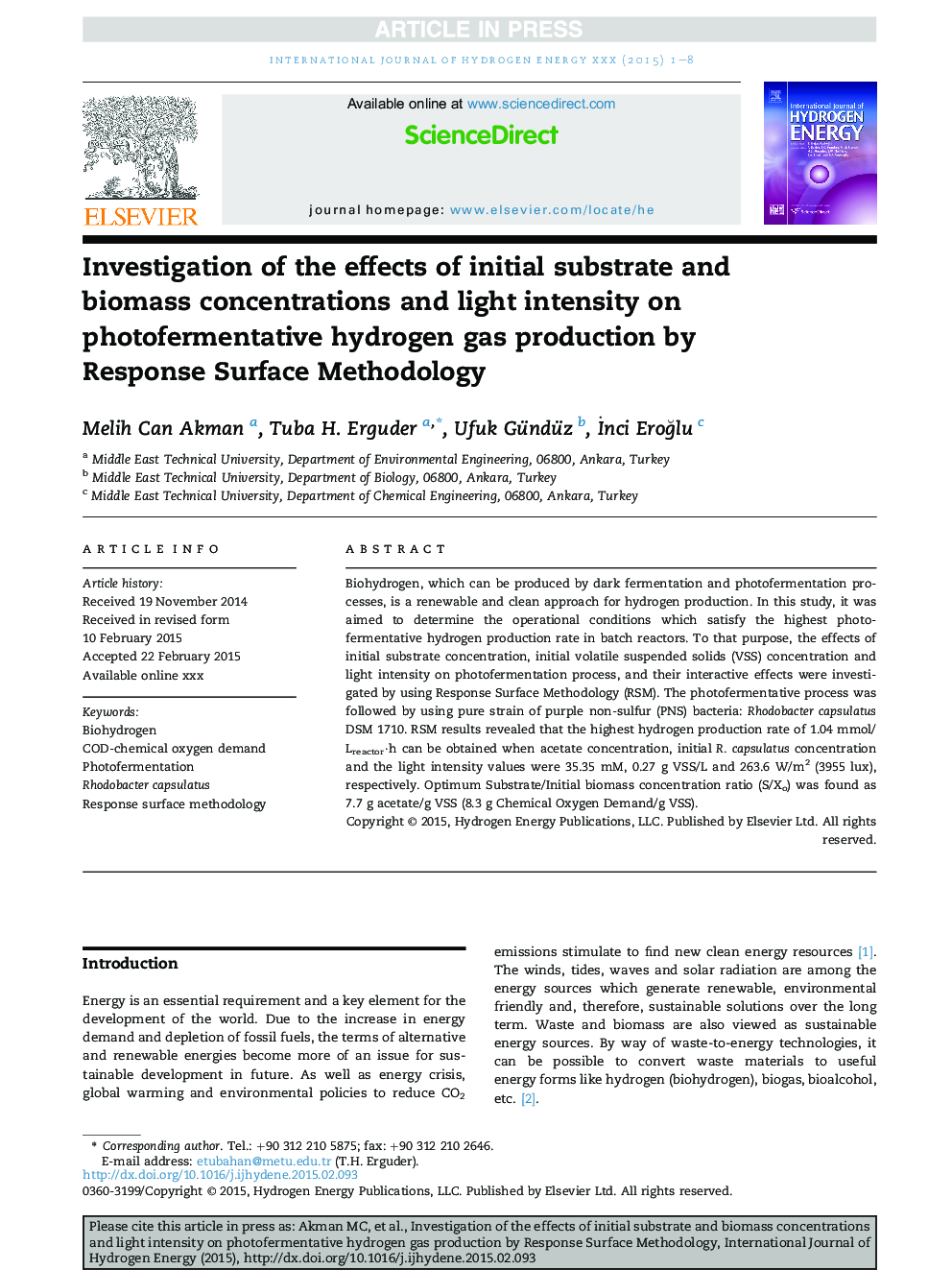| کد مقاله | کد نشریه | سال انتشار | مقاله انگلیسی | نسخه تمام متن |
|---|---|---|---|---|
| 7715683 | 1497458 | 2015 | 8 صفحه PDF | دانلود رایگان |
عنوان انگلیسی مقاله ISI
Investigation of the effects of initial substrate and biomass concentrations and light intensity on photofermentative hydrogen gas production by Response Surface Methodology
ترجمه فارسی عنوان
بررسی اثرات غلظت های پایه و غلظت بیوماس و شدت نور بر تولید گاز دیفرانسیلی بنزینی توسط روش واکنش سطحی
دانلود مقاله + سفارش ترجمه
دانلود مقاله ISI انگلیسی
رایگان برای ایرانیان
کلمات کلیدی
موضوعات مرتبط
مهندسی و علوم پایه
شیمی
الکتروشیمی
چکیده انگلیسی
Biohydrogen, which can be produced by dark fermentation and photofermentation processes, is a renewable and clean approach for hydrogen production. In this study, it was aimed to determine the operational conditions which satisfy the highest photofermentative hydrogen production rate in batch reactors. To that purpose, the effects of initial substrate concentration, initial volatile suspended solids (VSS) concentration and light intensity on photofermentation process, and their interactive effects were investigated by using Response Surface Methodology (RSM). The photofermentative process was followed by using pure strain of purple non-sulfur (PNS) bacteria: Rhodobacter capsulatus DSM 1710. RSM results revealed that the highest hydrogen production rate of 1.04 mmol/Lreactor·h can be obtained when acetate concentration, initial R. capsulatus concentration and the light intensity values were 35.35 mM, 0.27 g VSS/L and 263.6 W/m2 (3955 lux), respectively. Optimum Substrate/Initial biomass concentration ratio (S/Xo) was found as 7.7 g acetate/g VSS (8.3 g Chemical Oxygen Demand/g VSS).
ناشر
Database: Elsevier - ScienceDirect (ساینس دایرکت)
Journal: International Journal of Hydrogen Energy - Volume 40, Issue 15, 27 April 2015, Pages 5042-5049
Journal: International Journal of Hydrogen Energy - Volume 40, Issue 15, 27 April 2015, Pages 5042-5049
نویسندگان
Melih Can Akman, Tuba H. Erguder, Ufuk Gündüz, Ä°nci EroÄlu,
